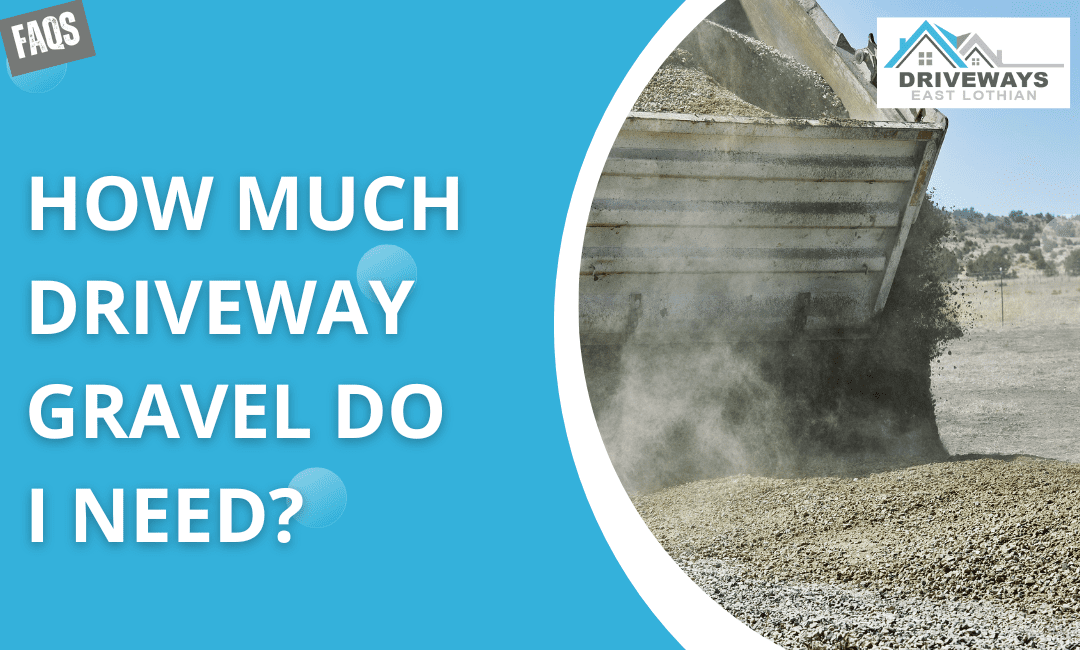Gravel driveways are a popular choice for their practicality and aesthetic appeal. If you’re planning to install or upgrade a gravel driveway, one of the first questions you’ll need to answer is: how much gravel do I need? This guide will help you calculate the amount of gravel required for your driveway, tailored to conditions and standards in Scotland, UK.
Understanding Gravel Driveways
What Is a Gravel Driveway? A gravel driveway consists of a layer of loose stones or gravel spread over a prepared base. It’s a cost-effective and versatile option for many homeowners. Gravel driveways come in various sizes and types of gravel, allowing you to choose the one that best suits your needs and preferences.
Factors Affecting Gravel Requirements:
- Driveway Size: The dimensions of your driveway will determine how much gravel you need.
- Gravel Depth: The depth of the gravel layer affects the quantity required. A standard depth is around 50-100mm, but this can vary based on the type of gravel and the expected traffic.
- Gravel Size and Type: Different sizes and types of gravel may have different coverage rates.
Calculating Gravel Requirements
Step 1: Measure Your Driveway
- Length and Width:
- Measure the length and width of your driveway in metres.
- Multiply these two measurements to get the area in square metres (m²).
- Example: If your driveway is 10 metres long and 4 metres wide, the area is 10m × 4m = 40m².
- Determine the Depth:
- Decide on the depth of gravel you want. For a standard gravel driveway, a depth of 50mm (5cm) to 100mm (10cm) is common.
- Example: If you choose a depth of 75mm (7.5cm), convert this depth to metres (0.075m).
Step 2: Calculate the Volume
- Volume Formula:
- Use the formula: Volume (m³) = Area (m²) × Depth (m)
- Example: For a driveway of 40m² with a depth of 0.075m: Volume = 40m² × 0.075m = 3m³
Step 3: Convert to Weight
- Gravel Density:
- Gravel density varies depending on the type and size, but a common estimate is around 1.5 tonnes per cubic metre (t/m³).
- Weight Calculation:
- Multiply the volume by the density to get the weight of gravel needed.
- Example: For 3m³ of gravel with a density of 1.5 t/m³: Weight = 3m³ × 1.5 t/m³ = 4.5 tonnes
Step 4: Consider Waste and Compaction
- Waste Factor:
- It’s wise to order a little extra gravel to account for compaction, spreading, and any waste. Adding 10-15% to your calculated amount is a good practice.
- Example: For 4.5 tonnes, add 10%: Extra Gravel = 4.5 tonnes × 0.10 = 0.45 tonnes
Total Gravel Needed = 4.5 tonnes + 0.45 tonnes = 4.95 tonnes (round up to 5 tonnes)
Tips for Ordering and Installing Gravel
- Choose the Right Gravel:
- Select gravel that suits your driveway’s use and aesthetic preferences. Common types include pea gravel, angular gravel, and crushed stone.
- Source from Reputable Suppliers:
- Buy gravel from reputable suppliers in Scotland who can provide high-quality material and accurate measurements.
- Prepare the Base:
- Ensure a properly prepared base to prevent shifting and sinking of the gravel. A geotextile membrane can help with stability and weed prevention.
- Spread Evenly:
- Distribute the gravel evenly across the driveway and ensure it is compacted properly to achieve a durable surface.
Conclusion
Calculating the gravel needed for your driveway involves measuring your area, deciding on the gravel depth, and converting this to volume and weight. By ordering a little extra to account for compaction and waste, you can ensure you have enough material to complete your project. For precise calculations and professional installation services in Scotland, contact us today. We’re here to help you achieve a beautiful and functional gravel driveway.

